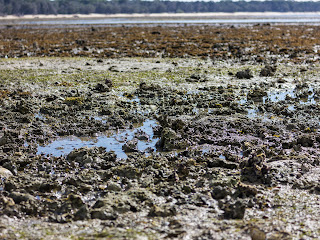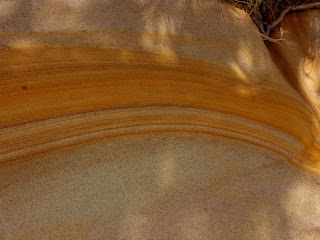The complete track is not yet open and will eventually be around 161 km in length, starting in Yarraman and finishing in Wulkuraka. The other open section is around 48 kms from Yarraman to Moore which I plan to ride at some future point.
The current ride is broken into a number of sections:
- Toogoolawah to Esk;
- Esk to Comminya;
- Comminya to Lowood; and
- Lowood to Fernvale.
As the trail follows the rail line, the climbs and descents are gentle so you don't really need a serious mountain bike for this ride. There are a number of creek crossings in gullys which you can walk your bike in and out of, or ride if you want the challenge.
We negotiated the ride with a touring bike with a 15 speed internal hub and a mountain bike running 1.25 road slicks. Next time I would change the road slicks up for a wider Tyre as I ended up with a slash in the Tyre wall requiring a sleeve patch and another blowout through the valve stem - most likely caused by a rock.
Don't do this ride in the wet or after a lot of rain as the ground can get very soft even though you are riding on the bed of rocks put down for the train track. With the number of gates, gullys, and obstacles you may not raise your cycling average over 15 kms per hour if you want to enjoy the scenery as you go. I am cycling fit so was a bit surprised at the low average given I did a base ride for 75 kms the day before on my road bike with an average around 30 kms per hour.
Winter would be best for this ride. The valley can certainly heat up during the day so I would rather rug up for the cold morning than struggle through the heat.
It seems it was the start of magpie open season on cyclists today with at least 4 separate attacks, but nothing too serious.
It seems it was the start of magpie open season on cyclists today with at least 4 separate attacks, but nothing too serious.
Toogoolawah to Esk - 19 kms
I found this section to be a little frustrating with the number of gates (i.e. nearly a gate for each kilometer). There are lots of options in Esk for refueling - the bakery had some great food!
Esk to Coominya - 24.5 kms
An interesting section with less gates! There are some rocky patches on the climbs and some descents to balance out the climbs - all gentle grades.
There is a general store in Coominya where I was lucky enough to pick up a patch kit with some more glue as I had killed two tubes by this point and had no more spares.
Comminya to Lowood - 12 kms
By this point you have broken the back of the ride and the trip into Lowood was relatively interesting with a few road crossings as well as a steep descent and ascent in and out of Lockyer Creek. This section would be painful in the wet so ensure you choose a dry track for your trip. Some sections felt like somebody had put your brakes on even though you were going down hill - I was a little tempted to get out onto the tarmac which ran parallel to the track as you left Comminya.
Lowood to Fernvale - 8 kms
This was a picturesque section of the trip, running along the upper reaches of the Brisbane River, past a flying fox colony and through some farmlands that were obviously irrigating from the river. There is one section of this track that isn't well signposted. Keep looking for a sign on a gatepost on your left as you are cycling along a dirt track just outside of Lowood.































































